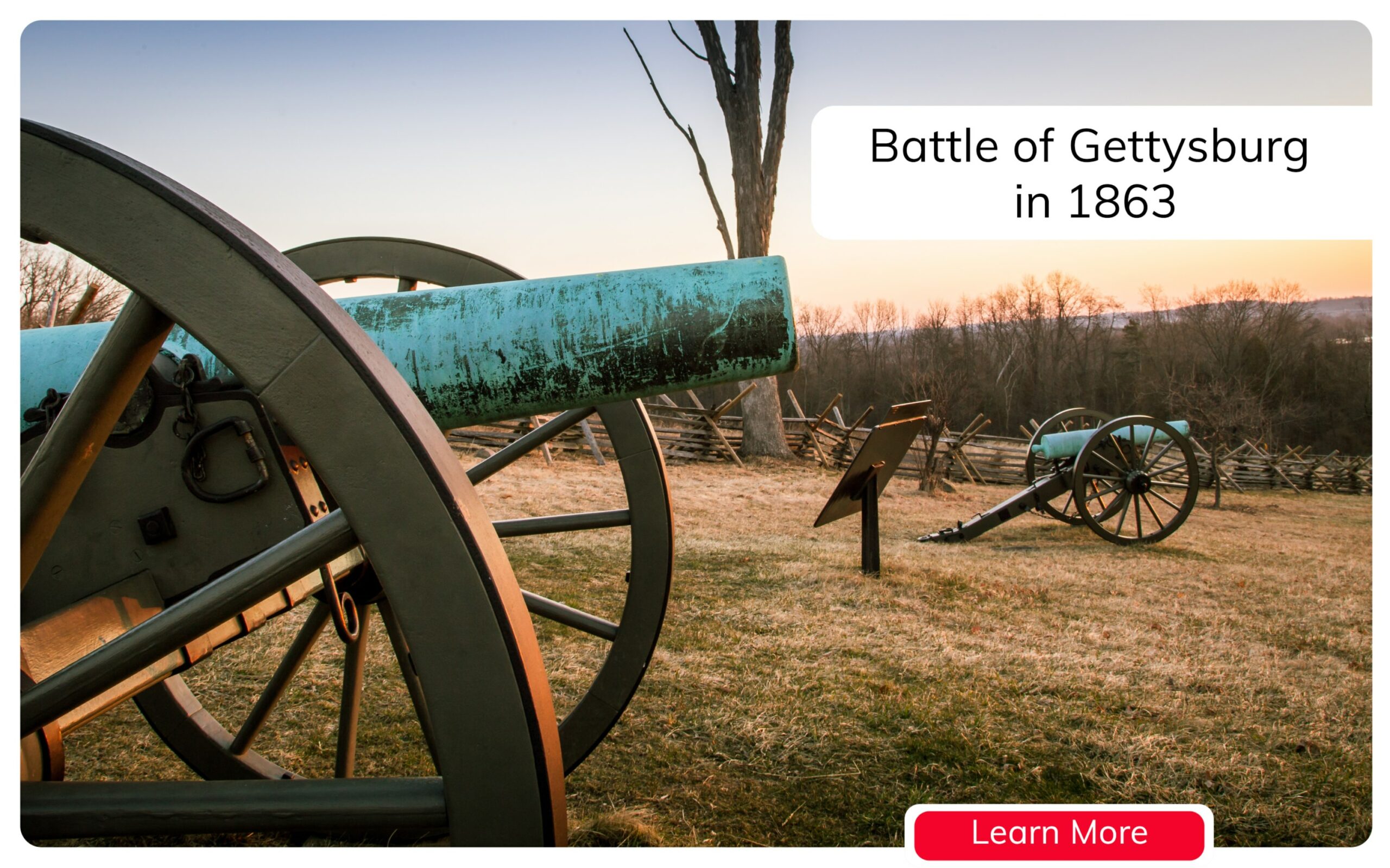The Battle of Gettysburg between July 1 and July 3, 1863, is considered the most significant war fought during the American Civil War. It ended with a victory for the Union troops.
It began with the Confederates’ Army invasion of Northern Virginia on July 1, led by Gen. Robert E Lee, when they managed a victory of the Union Army in Chancellorsville. That victory inspired Lee to advance his military conquests further north. He led the Confederate troops to Gettysburg, searching for supplies, but they were confronted by Federal soldiers who had already strengthened their defense lines in the town.
July 2 was perhaps the bloodiest day of the Battle of Gettysburg. The Union Army had already established their defenses from Culp’s Hill to Cemetery Ridge. Despite knowing that Gen. George G Meade’s Union army had secured the town, Lee remained adamant about attacking the northern troop led by Daniel Sickles, even against the advice of his defensive-centric second-in-command, James Longstreet. He ordered Longstreet and Ewell (another high-ranking commander) to strike the Union’s Cemetery Ridge and Culp’s Hill, respectively. Despite orders to attack early in the day, Longstreet’s corps hadn’t reached their intended strike location until 4 pm.
The following hours were characterized by the most aggressive military attacks, with enemy troops engaging in heavy gunfire along with Sickle’s territory that stretched from Devil’s Den and its surrounding wheat fields and peach orchards to the slopes of Little Round Top. Thanks to one Maine infantry that strengthened the Union Army’s fierce fighting. Although they lost the Devil Den and the surrounding fields and orchards, the northern troops retained Little Round Top. Meanwhile, Ewell’s soldiers coordinated their attacks on Culp’s Hill and Cemetery Ridge, but the Union Army took a few hours to halt their advance. That day, both armies suffered over 9,000 casualties each, bringing the two-day toll to about 35,000, the highest two-day count of the war.
On July 3, Lee ordered a division led by George Picket to counterattack the Union Army, but the “Picket Charge” wasn’t powerful enough to stall the Union troops. In total, over 50,000 soldiers died and were seriously wounded. The Union army had about 23,000 casualties, while the Confederates had 5,000 more casualties. Nevertheless, the Union Army won, and General Meade didn’t pursue the Confederates further.

